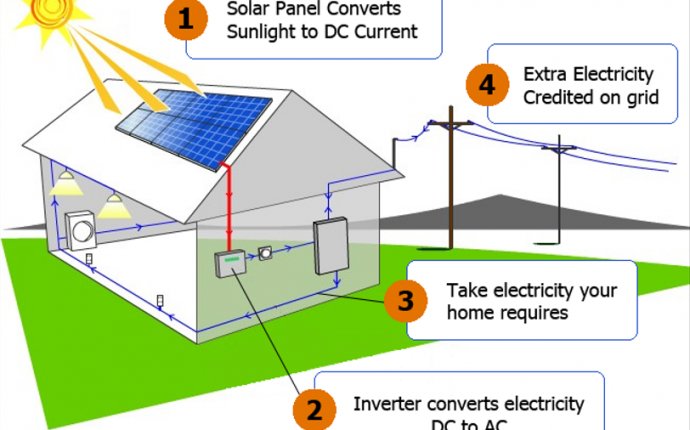
Solar estimates
Technology has advanced to such a level that many homes can receive the majority of their electrical supply directly through sunlight. Naturally, this means that a suitably sized solar panel array is properly mounted to the home. For this discussion we will look at the costs and requirements for sizing and installing a solar panel system for home energy creation.
Solar panel installation cannot be considered a "DIY" project, and a contractor will be necessary for the job. Most homeowners understand that the best moment to consider the installation of a system is when roof work is being done, but most do not have such an option. This means that excellent carpentry is required to prevent damage to the roof or leaks from occurring.
For the solar installation, the typical costs include:
- According to the 2008 U.S. Census the average home is approximately 2, 520 square feet, and such a structure will usually require an electrical system which can produce three to four kilowatts. The average price for a residential system after any rebates is $12, 000 per 1kW. This means that the average system is going to cost around $36, 000, but the prices vary widely by region (for example, the building located in hotter climate will consume many kilowatts in a/c costs).
- The value of this installation will include local, state, and federal rebates and programs which encourage and reward such improvements to the home. There are also the financial savings to consider on heating and cooling costs, which are the number one expense in most households. Additionally, interest payments on panels may be deductible if a system is financed through a home loan.
Cost breakdown
What needs to be included:
- Permits obtained and HOA and utility permits approved;
- Balance of system parts that include mounting racks and hardware, all necessary wiring for electrical connections, and power conditioning equipment such as an inverter;
- Solar cells and array which can contain amorphous or crystalline modules;
- Provide electrical wiring to code - This is going to depend upon the amount of work required, but electricians average from $65 to $85 per hour; and
- Provide carpentry or installation to code - This is going to depend upon the amount of work required, but installers can average $70 per hour. This project might be priced on a per item basis, or the carpenter might simply base it on the square footage;
Enhancement and improvement costs
- Batteries for storage of electricity generated during daylight hours;
- Stand-by generator for off-the-grid systems;
- Components required for a hybrid power system that includes wind generation in addition to solar;
- Net metering arrangements; and
- Charge controllers, power conditioning equipment, safety features and instrumentation for stand-alone systems.
Additional considerations and costs
How many hours will it take to install a system? Because the approach that a homeowner follows will vary according to the status of the roof, the installation may take as little as two hours per panel, or it could require up to five. The steps involved will include:
- Using panel mounts 1 aligned to rafters and aligning a track system across the studs;
- Securing the mounts 1 with steel lag bolts and using metal flashing 2 over mounts 1 to prevent leaks;
- Installing panels into mounts 1; and
- Running conduit from each panel to the appropriately sized inverter where power is then supplied to the home or the bank of batteries.
Clearly, this level of carpentry is usually something best done by a knowledgeable expert, and to ensure the security and stability of the panels a homeowner would be well-advised to use such services.









